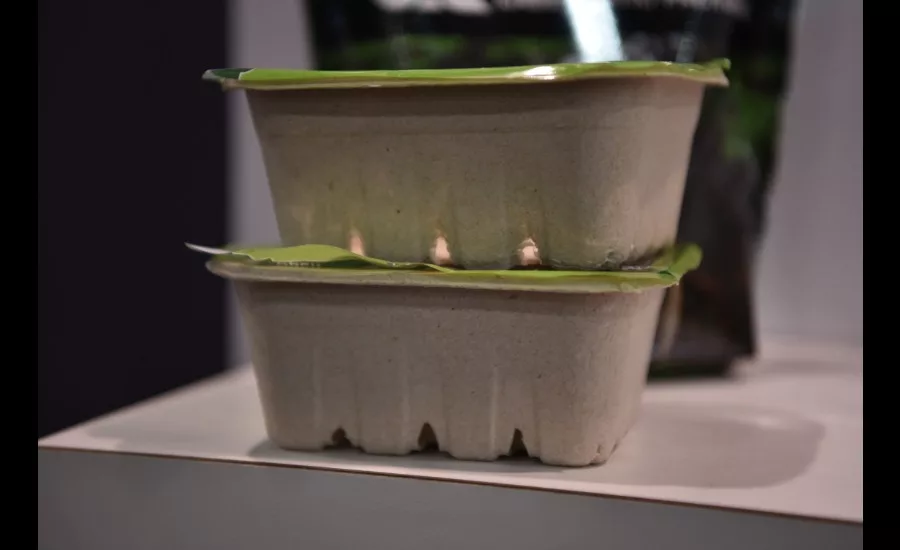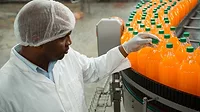Packaging
What’s in your sustainability toolkit?
Key considerations for brands and OEMs implementing eco-friendly packaging solutions

The move toward sustainable practices, products and materials is no longer on the horizon but ever-present. This is especially true as more consumers factor brands’ social responsibility initiatives in purchase decisions. In fact, global demand for sustainable packaging is expected to reach approximately $400 million by 2024 with a compound annual growth rate (CAGR) slightly above 7%[1]. As such, some brands have begun to integrate environmentally sound practices, with other companies leading the pack. Regardless of where companies stand on the sustainability spectrum, there is always room for growth—and certainly the demand to support it.
As consumer awareness of sustainable brand practices grows, there are some considerations that companies must make to catch up or stay ahead of the curve.
Educate your audience
Generally speaking, consumers are increasingly motivated to be more environmentally conscious.[2] While consumers generally gravitate toward sustainable packaging options[3], they may not fully understand the impact they have on the sustainable supply chain and how to properly recycle or compost products after use. As such, brands should ensure that their audiences understand the role they play so that that they may better integrate sustainable practices in their daily regimen.
Currently, manufacturers are using labels to indicate the sustainability advantages of packaging choices and to provide instructions on how to recycle the material after consuming with the product. Additionally, brands can implement smart packaging, such as quick response (QR) codes that enable consumers to access additional information on a product and are how to recycle it with a simple scan.
Brands that make strides to be more environmentally conscious resonate more with consumers and influence purchase decisions.[4] As such, it is in brands favor to communicate their efforts surrounding more sustainable practices.
Consider materials from all angles
While the adoption of sustainable materials is better for the environment, the use of certain substrates, such as biodegradable ones, can tack on additional costs compared to traditional, nonsustainable materials. Biodegradable packaging is qualified by the material’s ability to completely break down and decompose into natural elements within a short time after disposal, typically within a year or less. The materials can consist of paper and cardboard, corn starch, recycled polythene or plastarch material (PSM). Moreover, brands are often met with challenges sourcing sustainable materials to create quality packaging. As more consumers demand sustainable packaging and more manufacturers implement eco-conscious solutions, the supply of sustainable materials dwindles.[5] This can affect product price, which can consequently turn consumers away. However, consumers are more likely to pay more for a product knowing that it has sustainable qualities.[6]
Certain packaging options preserve foods with minimal or no preservatives. Companies need to ensure that as natural and organic foods continue to grow in popularity, the packaging also has sustainability enhancing attributes, such as recyclability, reusability or biodegradability. These features resonate with audiences. Flexible packaging is an example of a format that has numerous sustainable benefits for manufacturers while offering convenience for on-the-go consumption and reusability attributes to address food spoilage concerns.
Seek innovative materials and solutions
When designing sustainable packaging, manufacturers should take note of the materials used to ensure the quality aligns with the product and brand promise. Some materials give a product a more premium feel than others. For example, paper or cardboard packaging can incorporate different forms of lamination and varnishes for higher-end aesthetic and feel.
Manufacturers have started to design reusable containers to extend beyond a single use. Brands such as PepsiCo, Nestlé and Unilever have emerged with stainless steel and glass containers, double-walled steel containers as well as aluminum containers for refillable products like orange juice, oatmeal flakes, ice cream, deodorant sticks and refillable toothpaste tablets.
Sustainability efforts can extend beyond packaging. For example, efficient use of ingredients, processing techniques that safely preserve food, and operations that reduce energy consumption, waste and reduce emissions all enhance a brand’s sustainability.
For example, as consumers continue to gravitate toward products with fewer preservatives, high pressure processing can address shorter lifespan needs to compensate for a lack of chemical preservatives. HPP is a processing technique used to package organic and natural foods susceptible to spoilage with the application of purified cold water at incredibly high pressures. This technique enables brands to not only streamline production efficiency, but also meet sustainability targets by utilizing renewable energy and recycled resources, such as water and electricity.[7]
Sustainable solutions at PACK EXPO East 2020
Brands and OEMs need to ensure that they are keeping up with environmentally sound practices and maintaining their commitment to sustainability. Manufacturers can keep up with the industry trends, insights and technologies to implement the latest solutions by visiting PACK EXPO East (March 3-5, 2020, Philadelphia Convention Center).
Owned and produced by PMMI, The Association of Processing and Packaging Technologies, the show offers attendees the opportunity to see the latest sustainable solutions for manufacturer’s operations from more than 400 exhibiting companies. The show will also offer educational programming and opportunities as well as feature up to 7,000 attendees to network with industry peers.
Register and learn more at www.packexpoeast.com.
About PMMI
PMMI, The Association for Packaging and Processing Technologies, represents more than 850 North American manufacturers and suppliers of equipment, components and materials as well as providers of related equipment and services to the packaging and processing industry. We work to advance a variety of industries by connecting consumer goods companies with manufacturing solutions through the world-class PACK EXPO portfolio of trade shows, leading trade media and a wide range of resources to empower our members. The PACK EXPO trade shows unite the world of packaging and processing to advance the industries they serve: PACK EXPO International, PACK EXPO Las Vegas, Healthcare Packaging EXPO, PACK EXPO East, EXPO PACK México, EXPO PACK Guadalajara and ProFood Tech. PMMI Media Group connects manufacturers to the latest solutions, trends and innovations in packaging and processing year-round through brands including Packaging World, Automation World, Healthcare Packaging, Contract Packaging, ProFood World and OEM. PMMI Business Drivers assist members in pursuing operational excellence through workforce development initiatives, deliver actionable business intelligence on economic, market and industry trends to support members' growth strategies and actively connect the supply chain throughout the year.
[1] https://www.zionmarketresearch.com/inquiry/sustainable-packaging-market
[2] https://www.nielsen.com/us/en/insights/article/2018/global-consumers-seek-companies-that-care-about-environmental-issues/
[3] https://www.nielsen.com/us/en/press-releases/2015/consumer-goods-brands-that-demonstrate-commitment-to-sustainability-outperform/
[4]https://www.nielsen.com/us/en/insights/article/2018/global-consumers-seek-companies-that-care-about-environmental-issues/
[5] https://www.sciencedirect.com/science/article/pii/B9780081001769000050
[6] https://www.nielsen.com/us/en/insights/article/2018/was-2018-the-year-of-the-influential-sustainable-consumer/
[7] https://www.ncbi.nlm.nih.gov/pmc/articles/PMC6454086/
Looking for a reprint of this article?
From high-res PDFs to custom plaques, order your copy today!






